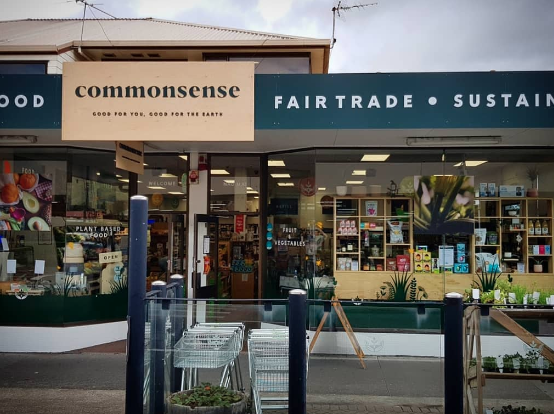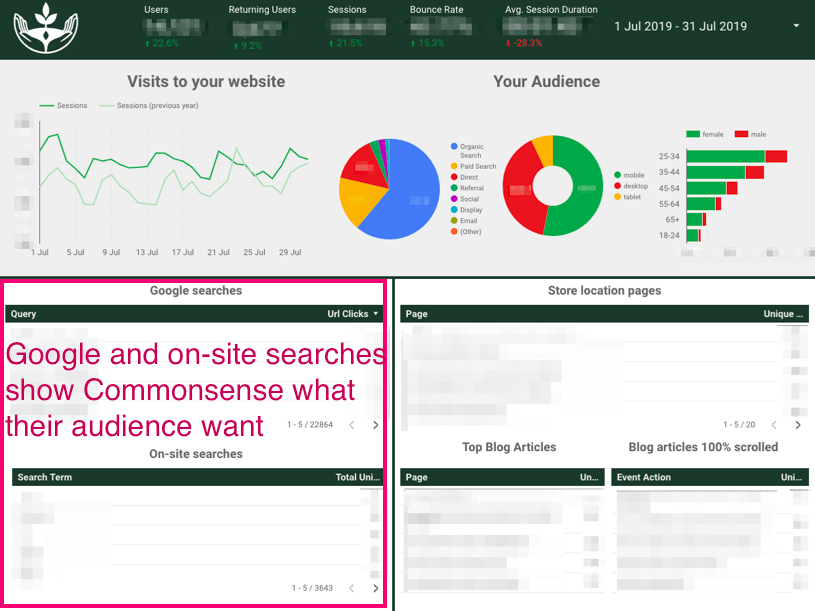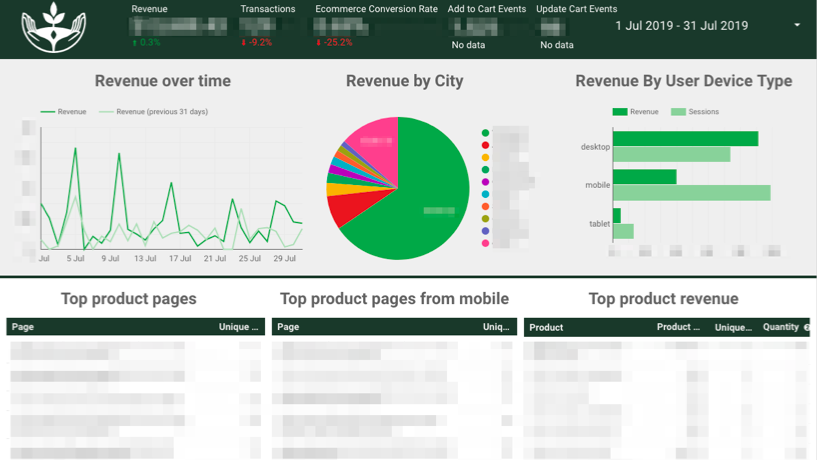If you have an ecommerce website you need data you can trust, so that you can understand your audience and increase your sales. If you’ve tried to track sales data with Google Analytics (GA) you may have found that it’s not a simple task. Commonsense are a family business selling organic, sustainable and fair trade products. They were seeing discrepancies between their core sales data and Google Analytics sales data. We helped them get accurate data, built them a dashboard, and found audience insights to help them improve their performance.

Commonsense are a rarity, they would prefer that people came into their stores rather than purchasing their products online. They value community and connectedness – two of their top blog posts are Foraging for edible weeds, and Where to get free pallets in Wellington. After spending a bit of time with the team I felt like going organic and moving to the countryside, so that I too could bring a whiff of pine into the office on my natural woollen jersey.

In saying that, they run a popular online store, and want to make it as user-friendly and profitable as they can without compromising their values. Their goals were to:
- get accurate sales data from GA
- see what products people are viewing but not buying
- see whether promotions are working
- make it easy for people to use their website
Sales data discrepancy
Our code expert Bronwyn found that the large variations between their data sources were due to changes to orders after the online sale was made. For example if a product wasn’t in stock a Commonsense person would ring the customer and change their order, which wasn’t reflected in GA. The discrepancies were also due to GA thinking that every time someone visited an order summary page that they had completed an order. This is an easy mistake – GA needs to be told that not all visits to an order summary page have resulted in a purchase, it could just be people checking what they ordered.
Customer needs
Google and on-site searches show the products and services your audience want from your website. Popular searches on the Commonsense website include tea, hemp, bone broth and beeswax – think lyrics to an organic, eco-friendly Julie Andrews song. Most of these products aren’t represented in the top online sales so there’s an opportunity to promote these better on the website, and encourage people to purchase them in-store.

Products visited but not bought
It’s often easy to see what people buy through your website from your core sales system. But what about the products that people looked at but didn’t buy? Once you can identify these pages you can tweak your offering to improve your sales rate.
For example on the Commonsense website there were more than 100 visits to the Vegan delights gift box page, but only two sales. The page does well in Google for the search ‘vegan gift box’ so it’s getting good traffic. Commonsense can do user research and experiment with different offerings to increase their sales – for example a cheaper product or shipping cost, or different gift box design may perform better.
Effectiveness of campaigns
If you’re running campaigns through channels like Adwords, social media and email channels you want to see whether visits are translating into sales.
Bronwyn found the Commonsense Adwords campaigns were resulting in good traffic but not sales. Good traffic is a good start – they’re halfway there in that they’ve attracted people to their website. We recommended user research with their target audience to understand more about what to offer them, and to ensure that this group can easily complete a purchase on the website.
We’ve helped Commonsense uncover some interesting trends through data, and they can build on these insights with user research. Data is a great starting point because we can quickly analyse the mass audience to find stand-out trends, and see what changes will affect the most amount of users. User research helps us dive deeper into the ‘why’ behind the data. For CSO we recommended taking a laptop to their stores and asking people to complete tasks on the website based on the insights above. After they make changes we can measure the results and find more improvements to explore, and the glorious user feedback loop begins…
